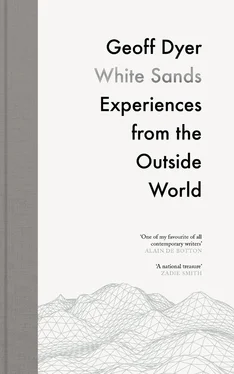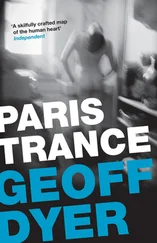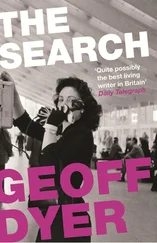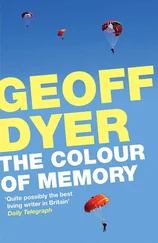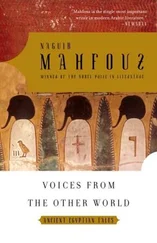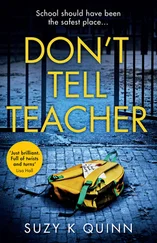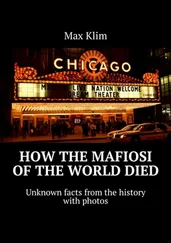With all the space out west there’s no incentive for cities not to sprawl. In the case of Salt Lake City, mountains to the east and the lake to the west mean it does most of its sprawl along a north-south ribbon. Still, there was room for the interstate to gradually assume the width, frenzy — and, eventually, stagnation — of a Los Angeles freeway. Salt Lake City merged, imperceptibly, into Ogden, where we were staying. Not a bad place: fringed by Schloss Adler mountains in at least two directions and looking, on 25th Street at least, as if it was making a Spiral Jetty —style comeback from a downturn in fortunes still afflicting other parts of town. Or maybe it was just the alpine winter, which, even in mid-May, had still not shot its wad. Trees weren’t convinced they’d got the all-clear; leaf-wise, none of them were venturing out.
In the hotel I read again Lawrence’s essay about Taos. Whereas ‘some places seem temporary on the face of the earth,’ Lawrence believed, ‘some places seem final’:
Taos pueblo still retains its old nodality. Not like a great city. But, in its way, like one of the monasteries of Europe. You cannot come upon the ruins of the old great monasteries of England, beside their waters, in some lovely valley, now remote, without feeling that here is one of the choice spots of the earth, where the spirit dwelt. To me it is so important to remember that when Rome collapsed, when the great Roman Empire fell into smoking ruins, and bears roamed in the streets of Lyon and wolves howled in the deserted streets of Rome, and Europe really was a dark ruin, then, it was not in castles or manors or cottages that life remained vivid. Then those whose souls were still alive withdrew together and gradually built monasteries, and these monasteries and convents, little communities of quiet labour and courage, isolated, helpless, and yet never overcome in a world flooded with devastation, these alone kept the human spirit from disintegration, from going quite dark, in the Dark Ages. These men made the Church, which again made Europe, inspiring the martial faith of the Middle Ages.
Taos pueblo affects me rather like one of the old monasteries. When you get there you feel something final. There is an arrival.
What a piece of writing and thinking! It’s as off-the-cuff as Kerouac; it’s analytical, hypnotic, profound, and you get the impression that Lawrence wrote the whole thing — in 1923—without giving it so much as a second thought. Like Vedder’s painting, it tells us so much about the power that some places exert and why we go to them. In their different ways, both De Maria and Smithson were attempting to create nodality.
The weather in the morning, as we prepared for our assault on the Jetty, was not auspicious: sagging cloud, hardly any light and, the moment we drove off, drizzle. On the way out of town we got stuck behind a Dirty Harry school bus. By the time we were back on I-15 it was pouring.
We turned off the interstate at Brigham City, heading towards Corinne, a small farming community. It already felt far more remote, in atmosphere, than it was distant in miles — like Snowdonia or Mull, and just as soggy and drear. The sky was heavy with grey but at least it was only leaking now, not properly raining. Khaki-coloured hills crawled out from beneath a tarpaulin of cloud. The route to the Jetty took us through the Golden Spike National Historic Site, commemorating the spot where the two parts of the first transcontinental railroad met in 1869. It was at this point that we began participating in our own form of interactive art commentary.
Smithson was the prime mover in the Land Art scene: not just creating work but organizing exhibitions, setting out credos, proselytising, writing reviews and providing dense theoretical cover for the whole Earth Works hustle. He was a prolific, even torrential writer, and an omnivorous reader. For current tastes he was a tad too caught up in what might be called the discursive practice of the day, but his writing is replete with moments of compelling lucidity and sustained flights of pragmatically visionary appeal. The cover photograph of his Collected Writings shows the artist on the Jetty, gazing dialectically at his own reflection, looking like Jim Morrison, or like Val Kilmer when he played Morrison in the Oliver Stone movie, embodying his motivating ideas of taking art out of the museum and into the open. Keeping faith with this strategy, I had read out and recorded Smithson’s account of his own first trip here and burned it onto a CD to play on the car stereo. As we drove, we listened to this weirdly Anglicised Smithson describing the landscape through which we were passing.
‘The valley spread into an uncanny immensity unlike the other landscapes we had seen. . Sandy slopes turned into viscous masses of perception. Slowly, we drew near to the lake, which resembled an impassive faint violet sheet held captive in a stony matrix, upon which the sun poured down its crushing light. . A series of seeps of heavy black oil more like asphalt occur just south of Rozel Point. For forty or more years people have tried to get oil out of this natural tar pool. Pumps coated with black stickiness rusted in the corrosive salt air. . This site gave evidence of a succession of man-made systems mired in abandoned hopes.’
The irony is that in February 2008, Dia organized a petition opposing plans by Pearl Montana Exploration and Production to drill boreholes in the Great Salt Lake — the latest, in other words, in a long history of attempts ‘to get oil’ that was part of Smithson’s original fascination with the area. Which means that the campaign to protect the Spiral Jetty is, in some ways, at odds with the convergence of inspiration and circumstance that led to its construction.
We had been given enigmatically precise directions on how to find the Spiral Jetty —‘Another.5 miles should bring you to a fence but no cattle guard and no gate’—only to find that the route was discreetly signposted. The gravel road was corrugated, washboarded. We jolted and rattled at fifteen miles an hour, past calves the size of big dogs, and cows the size of cows, all of them black and resigned to their lot. The sky slumped over a landscape at once monotonous and always subtly changing. There were constant reminders of Britain, the Dartmoor feeling of worn-down ancientness. Seagulls too. Wordsworth might have had this place in mind when he wrote of ‘visionary dreariness.’ Suddenly there was a brown cow — the black sheep of the family — and, to the south, in a gap between low, dull hills, a pale glow. Light bouncing off the salt flats? That, in any case, was where we were headed.
We drove more and more slowly as the potholes and trenches increased in width, depth and frequency. The road continued to deteriorate until it gave up any claim to being a road. We left the cocoon of the car, began walking. There had been no signs for a while but there were, allegedly, three things to look out for as markers: an abandoned trailer, an old Dodge truck and — interestingly — an amphibious landing craft. No sign of any of them. But that glow we’d noticed earlier? It wasn’t just the reflection on the lake; the sky itself was brightening. To our left the lake looked congealed, like a dead ocean on a used-up planet. There was a faint smell of sulphur. It was a location that might have been scouted for the closing scenes of Cormac McCarthy’s The Road, where the shining sea turns out to be a further extent of desolation. Protruding from the lake’s edge were the remains of some kind of enterprise, long since aborted. Was that the Spiral Jetty ? If it was, then it was in far worse shape than we’d anticipated, not exactly a spiral and barely a jetty at all. There had recently been a certain amount of debate as to whether to try to preserve the Jetty , to raise it up and stop it disappearing again or just leave it to its own devices, to decay gracefully and commend itself to the shallow-looking deep. But no, it couldn’t be that far gone. Could it? We kept walking in a state of foiled uncertainty: had we already had the experience we were eagerly anticipating?
Читать дальше
